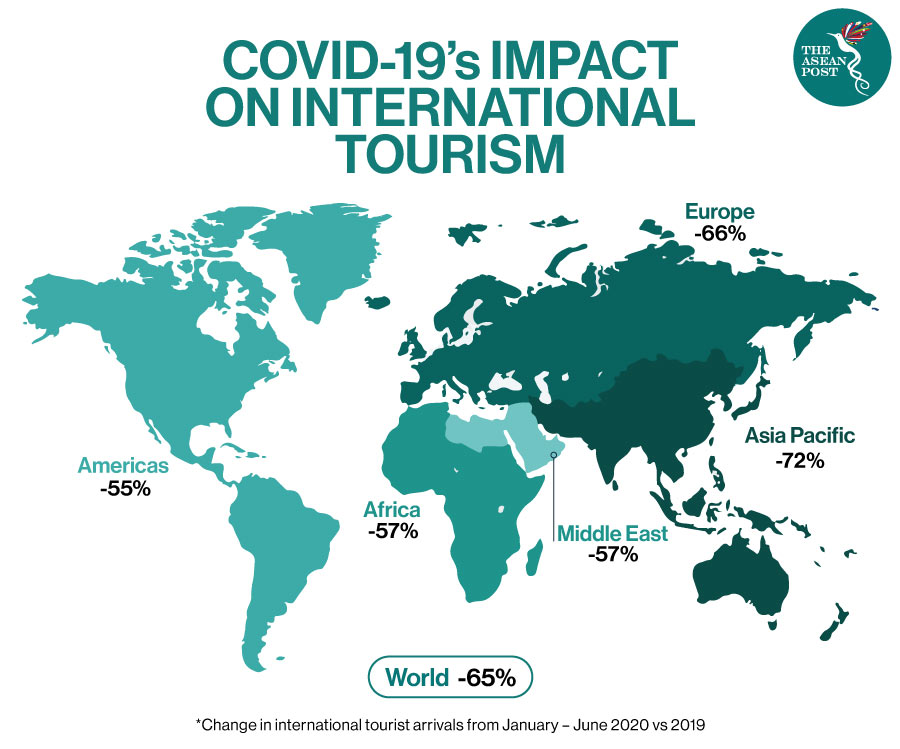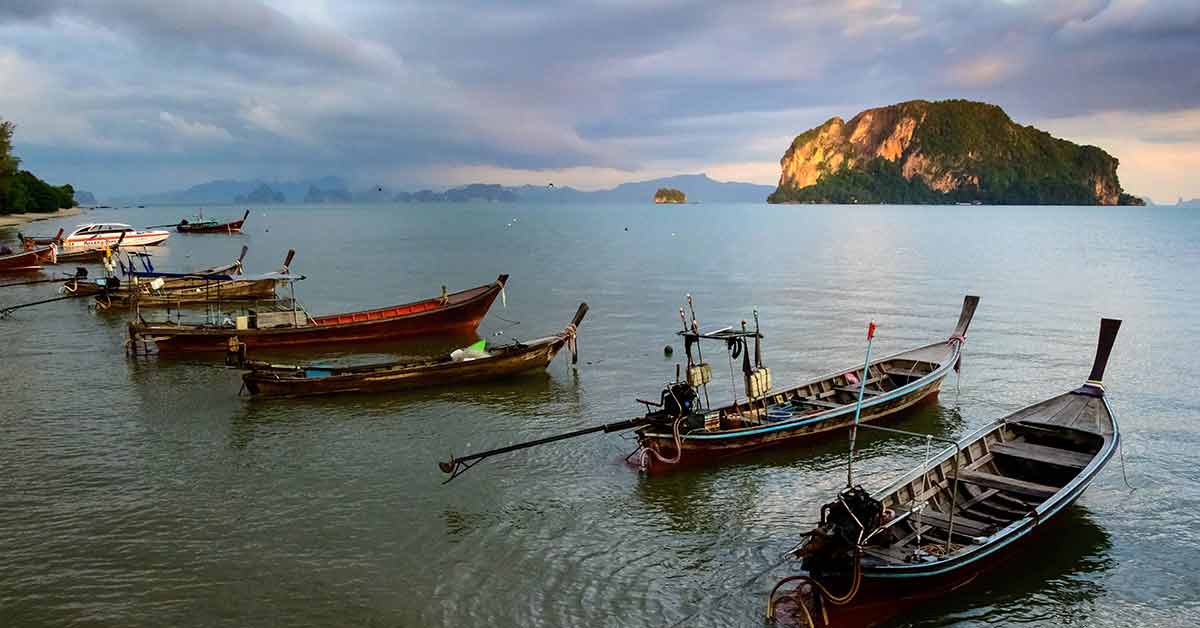Thailand is home to landmarks such as those listed under UNESCO’s World Heritage Sites, beautiful beaches, and crystal-clear waters. The kingdom is also popular for its wide variety of street food, local delicacies, and vibrant nightlife.
Tourism is a primary economic contributor to the country. In 2019, it was reported that foreign tourist arrivals hit a record 39.8 million, which is equivalent to more than half of Thailand’s population. This came after a rise of seven percent to 38.2 million in 2018. Tourist revenue had also risen to three percent to THB1.93 trillion (US$64.3 billion) in 2019 compared to a year prior.
However, the country which heavily relies on tourism, was hit hard by the COVID-19 virus which was first identified in January 2020. A year after that, like other nations worldwide, Thailand is still grappling with the pandemic and its impacts on local businesses and industries.
The ASEAN member state has reported over 17,000 total infections with 76 COVID-19-related deaths to date. In recent weeks, it has also recorded triple digit daily tallies for new infections amid an outbreak detected in the seafood industry in Samut Sakhon, just southwest of its capital city of Bangkok.
As of October 2020, around 10 percent of businesses in Thailand’s tourism industry have closed with almost 540,000 workers laid-off due to the economic impact of the pandemic. Moreover, at least 931 registered tourism-related companies closed in 2020.

Ghost Towns
Recently, a series of photos of the popular tourist destination city of Hatyai have gone viral on social media; showing the city looking like a “barren, deserted land,” as reported by a Malaysian news portal.
Hatyai is the largest city in southern Thailand, a popular tourist destination especially among neighbouring Malaysians – which is located near the border of Malaysia.
The Facebook post by Joey Tong, a Malaysian residing in Thailand has been shared more than three thousand times at the time of writing. He told the media that he took the photos at the most popular spot in the city which is Lee Gardens at about 8:30 pm – typically a peak hour there. Instead of bustling markets and busy streets usually seen during pre-pandemic times, the photos taken looked like those of a ghost town – with only a few people out buying necessities.
Only one roadside stall was operating in front of Lee Gardens, while the rest of the stores were shut, explained Tong. He also added that the 7-Eleven, Watsons, and foot parlours were all closed.
Meanwhile on Thailand’s famed resort islands, the situation is not looking good either. Before the pandemic, Phuket received around 90 percent of its tourism income from international tourists. In the popular tourist town of Patong, busy streets lined with bars and nightclubs are now empty. At Bangla Road which almost exclusively featured beer bars – chairs are now stacked on tables and dust gathers, as businesses remain shuttered.
“When there are no foreigners, the area is just empty. There’s barely anyone walking down the road,” said Rungarun Loiluen, who works at The Kitchen, a restaurant at the end of Bangla Road.
Even as hotels across the country slashed prices to attract domestic travellers – it is still not enough. As reported by Japan Times, Hotel Clover Patong Phuket, which offered up to 75 percent off, still ran at about 10 percent occupancy in December 2020, which was usually overbooked before the health crisis.
“I’ve been in Phuket for 20 years and have never seen it this quiet,” said Jessada Srivichian, the hotel’s country financial manager. “We need international visitors,” she added.
To Open Soon?
Yesterday, Thailand’s Finance Ministry slashed its 2021 economic growth forecast to 2.8 percent from 4.5 percent as projected earlier. This comes after fresh waves of COVID-19 cases in the country hit its tourism sector.
It was reported that the ministry now expects the country to receive five million foreign tourists this year, down 25 percent from 2020; compared with eight million arrivals predicted earlier. Last year, foreign visitor numbers fell 83 percent to just 6.7 million.
"The main factor for the outlook downgrade is lower foreign arrivals... which have impacted related economic activity despite the government injecting money through stimulus measures," said ministry spokeswoman, Kulaya Tantitemit.
According to a recent survey conducted by the Tourism Council of Thailand (TCT), several local residents and tourism operators want Thailand to fully reopen its borders to international tourists with a 14-day quarantine still in place.
The study was conducted on 785 tourism-related operators and 1,444 locals from 11 November to 10 December, 2020.
The TCT found that 60 percent of locals and 50 percent of tourism operators agree with the idea. On lifting the mandatory quarantine for travellers from low-risk countries, only 39 percent of locals surveyed approved, while half of operators agreed.
However, it was also recently reported that Thailand is considering allowing vaccinated travellers to skip the 14-day quarantine, in a bid to save its tourism industry.
Under the proposed plan named “Welcome Back to Thailand Again,” the kingdom hopes to see travellers return by the third quarter of 2021. According to Chamnan Srisawat, president of the TCT, Thai travel operators have started talks with agencies in potential markets, such as China, to restart destination marketing and to prepare for future trips.
Related Articles:
